Study on the Pitch Angle Effect on the Power Coefficient and Blade Fatigue Load of a Vertical Axis Wind Turbine
Abstract
:1. Introduction
2. Computational Model
2.1. Model of the VAWT
2.2. Computational Method
3. Verification and Validation of the Computational Model
3.1. Grid Independence Verification
3.2. Validation Based on a Correction Method for 2D Calculations
- (a)
- Determine a required TSR and search the corresponding power coefficient, then calculate the induction factor and the target incoming wind speed.
- (b)
- Obtain the corrected TSR based on the reduced incoming wind speed and search for the power coefficient corresponding to the corrected TSR.
- (c)
- Correct the power coefficient based on the reduced incoming wind speed. Specifically, obtain the real power corresponding to the reduced incoming wind speed and then calculate the corrected power coefficient based on the real power and the original reference wind speed.
- (d)
- Based on the corrected power coefficient, calculate the induction factor and the target incoming wind speed again.
- (e)
- If the relative error of the inducement factors between two adjacent rounds does not exceed 0.05, the current corrected power coefficient will be the final corrected power coefficient. If the above relative error exceeds 0.05, repeat the steps of b~e.
4. Results and Discussion
4.1. Pitch Angle Effect on the Power Coefficient
4.2. Pitch Angle Effect on the Blade Normal Force
5. Conclusions
- (a)
- The inability of the 2D computational model to reflect the flow spanwise divergence effect is the main cause for the inconsistency between its results and the 3D experimental results. Based on this, a correction method was proposed to correct the 2D computational results, which helps to verify the accuracy of the present 2D computational model and enhances the feasibility of 2D computational models to calculate VAWT aerodynamics.
- (b)
- The optimal pitch angle in terms of the power coefficient varies with the TSR decrease, indicating that varying the pitch with the TSR is necessary to make the wind turbine operate at the optimal power coefficient state for different TSRs. Meanwhile, the principle to guide the pitch variation is to avoid flow separation in the downwind zone and minimize the AoAs in the upwind zone.
- (c)
- For the studied lowest TSR, varying the pitch from the optimal one in terms of the power coefficient can significantly reduce the blade’s normal force amplitude with the power coefficient slightly reduced. As the vortex–blade encounter will enhance the blade’s normal force fluctuation, the principle to reduce the fatigue load is to avoid the vortex–blade encounter, while minimizing the AoAs in the downwind zone.
- (d)
- The mechanism in the pitch angle effect is not only related to the AoA and flow separation, but also related to the vortex–blade encounter phenomenon at the lowest TSR. Specifically, the encounter will increase the blade torque and enhance the blade normal force fluctuation and, with the pitch angle increase, gradually weaken and disappear.
Author Contributions
Funding
Data Availability Statement
Acknowledgments
Conflicts of Interest
References
- Kumar, R.; Raahemifar, K.; Fung, A.S. A critical review of vertical axis wind turbines for urban applications. Renew. Sustain. Energy Rev. 2018, 89, 281–291. [Google Scholar]
- Möllerström, E.; Gipe, P.; Beurskens, J.; Ottermo, F. A historical review of vertical axis wind turbines rated 100 kW and above. Renew. Sustain. Energy Rev. 2019, 105, 1–13. [Google Scholar]
- Fiedler, A.J.; Tullis, S. Blade Offset and Pitch Effects on a High Solidity Vertical Axis Wind Turbine. Wind Eng. 2009, 33, 237–246. [Google Scholar]
- Miao, W.; Liu, Q.; Xu, Z.; Yue, M.; Li, C.; Zhang, W. A comprehensive analysis of blade tip for vertical axis wind turbine: Aerodynamics and the tip loss effect. Energy Convers. Manag. 2022, 253, 115140. [Google Scholar]
- Shu, Z.; Li, Q.; Chan, P. Investigation of offshore wind energy potential in Hong Kong based on Weibull distribution function. Appl. Energy 2015, 156, 362–373. [Google Scholar]
- Zhang, Q.; Musa, B.; Miao, W.; Liu, Q.; Li, C.; Yue, M.; Wang, P. Aerodynamic analysis of a novel pitch control strategy and parameter combination for vertical axis wind turbines. Renew. Energy 2023, 216, 119089. [Google Scholar]
- Melani, P.F.; Balduzzi, F.; Ferrara, G.; Bianchini, A. Development of a desmodromic variable pitch system for hydrokinetic turbines. Energy Convers. Manag. 2021, 250, 114890. [Google Scholar]
- Peng, Y. Aerodynamic Characteristics and Optimal Pitch Control of High-Solidity Straight-Bladed Vertical Axis wind Turbines. Ph.D. Thesis, Hong Kong Polytechnic University, Hong Kong, 2018. [Google Scholar]
- Abdalrahman, G.; Melek, W.; Lien, F.S. Pitch angle control for a small-scale Darrieus vertical axis wind turbine with straight blades (H-Type VAWT). Renew. Energy 2017, 114, 1353–1362. [Google Scholar]
- Paraschivoiu, I.; Trifu, O.; Saeed, F. H-Darrieus Wind Turbine with Blade Pitch Control. Int. J. Rotating Mach. 2009, 2009, 505343. [Google Scholar]
- Bundi, J.M.; Ban, X.; Wekesa, D.W.; Ding, S. Pitch control of small H-Type Darrius vertical axis wind turbines using advanced gain scheduling techniques. Renew. Energy 2020, 161, 756–765. [Google Scholar] [CrossRef]
- Bianchini, A.; Ferrara, G.; Ferrari, L. Pitch Optimization in Small-size Darrieus Wind Turbines. Energy Procedia 2015, 81, 122–132. [Google Scholar] [CrossRef]
- Li, Q.; Maeda, T.; Kamada, Y.; Murata, J.; Yamamoto, M.; Ogasawara, T.; Shimizu, K.; Kogaki, T. Study on power performance for straight-bladed vertical axis wind turbine by field and wind tunnel test. Renew. Energy 2016, 90, 291–300. [Google Scholar]
- Asr, M.T.; Nezhad, E.Z.; Mustapha, F.; Wiriadidjaja, S. Study on start-up characteristics of H-Darrieus vertical axis wind turbines comprising NACA 4-digit series blade airfoils. Energy 2016, 112, 528–537. [Google Scholar]
- Rezaeiha, A.; Kalkman, I.; Blocken, B. Effect of pitch angle on power performance and aerodynamics of a vertical axis wind turbine. Appl. Energy 2017, 197, 132–150. [Google Scholar]
- Nguyen, M.T.; Balduzzi, F.; Goude, A. Effect of pitch angle on power and hydrodynamics of a vertical axis turbine. Ocean. Eng. 2021, 238, 109335. [Google Scholar]
- Li, Q.; Maeda, T.; Kamada, Y.; Murata, J.; Kawabata, T.; Shimizu, K.; Ogasawara, T.; Nakai, A.; Kasuya, T. Wind tunnel and numerical study of a straight-bladed vertical axis wind turbine in three-dimensional analysis (Part I: For predicting aerodynamic loads and performance). Energy 2016, 106, 443–452. [Google Scholar]
- Balduzzi, F.; Bianchini, A.; Maleci, R.; Ferrara, G.; Ferrari, L. Critical issues in the CFD simulation of Darrieus wind turbines. Renew. Energy 2016, 85, 419–435. [Google Scholar]
- Balduzzi, F.; Bianchini, A.; Ferrara, G.; Ferrari, L. Dimensionless numbers for the assessment of mesh and timestep requirements in CFD simulations of Darrieus wind turbines. Energy 2016, 97, 246–261. [Google Scholar]
- Menter, F.R. Two-Equation Eddy-Viscosity Turbulence Models for Engineering Applications. AIAA J. 1994, 32, 1598–1605. [Google Scholar]
- ANSYS. ANSYS Fluent Theory Guide Release 17.0; ANSYS Inc.: Canonsburg, PA, USA, 2015. [Google Scholar]
- Wilcox, D.C. Reassessment of the scale-determining equation for advanced turbulence models. AIAA J. 1988, 26, 1299–1310. [Google Scholar]
- Jones, W.P.; Launder, B.E. The calculation of low-Reynolds-number phenomena with a two-equation model of turbulence. Int. J. Heat Mass Transf. 1972, 16, 1119–1130. [Google Scholar] [CrossRef]
- Daroczy, L.; Janiga, G.; Petrasch, K.; Webner, M.; Thévenin, D. Comparative analysis of turbulence models for the aerodynamic simulation of H-Darrieus rotors. Energy 2015, 90, 680–690. [Google Scholar] [CrossRef]
- Rezaeiha, A.; Kalkman, I.; Blocken, B. CFD simulation of a vertical axis wind turbine operating at a moderate tip speed ratio: Guidelines for minimum domain size and azimuthal increment. Renew. Energy 2017, 107, 373–385. [Google Scholar] [CrossRef]
- Edwards, J.M.; Danao, L.A.; Howell, R.J. PIV measurements and CFD simulation of the performance and flow physics and of a small-scale vertical axis wind turbine. Wind Energy 2015, 1, 201–217. [Google Scholar] [CrossRef]
- Howell, R.; Qin, N.; Edwards, J.; Durrani, N. Wind tunnel and numerical study of a small vertical axis wind turbine. Renew. Energy 2010, 35, 412–422. [Google Scholar] [CrossRef]
- Li, C.; Zhu, S.; Xu, Y.; Xiao, Y. 2.5D large eddy simulation of vertical axis wind turbine in consideration of high angle of attack flow. Renew. Energy 2013, 51, 317–330. [Google Scholar] [CrossRef]
- Mclaren, K.W. A Numerical and Experimental Study of Unsteady Loading of High Solidity Vertical Axis Wind Turbines. Ph.D. Thesis, Mcmaster University, Hamilton, ON, Canada, 2011. [Google Scholar]
- Newman, B.G. Actuator-disc theory for vertical-axis wind turbines. J. Wind Eng. Ind. Aerodyn. 1983, 15, 347–355. [Google Scholar] [CrossRef]


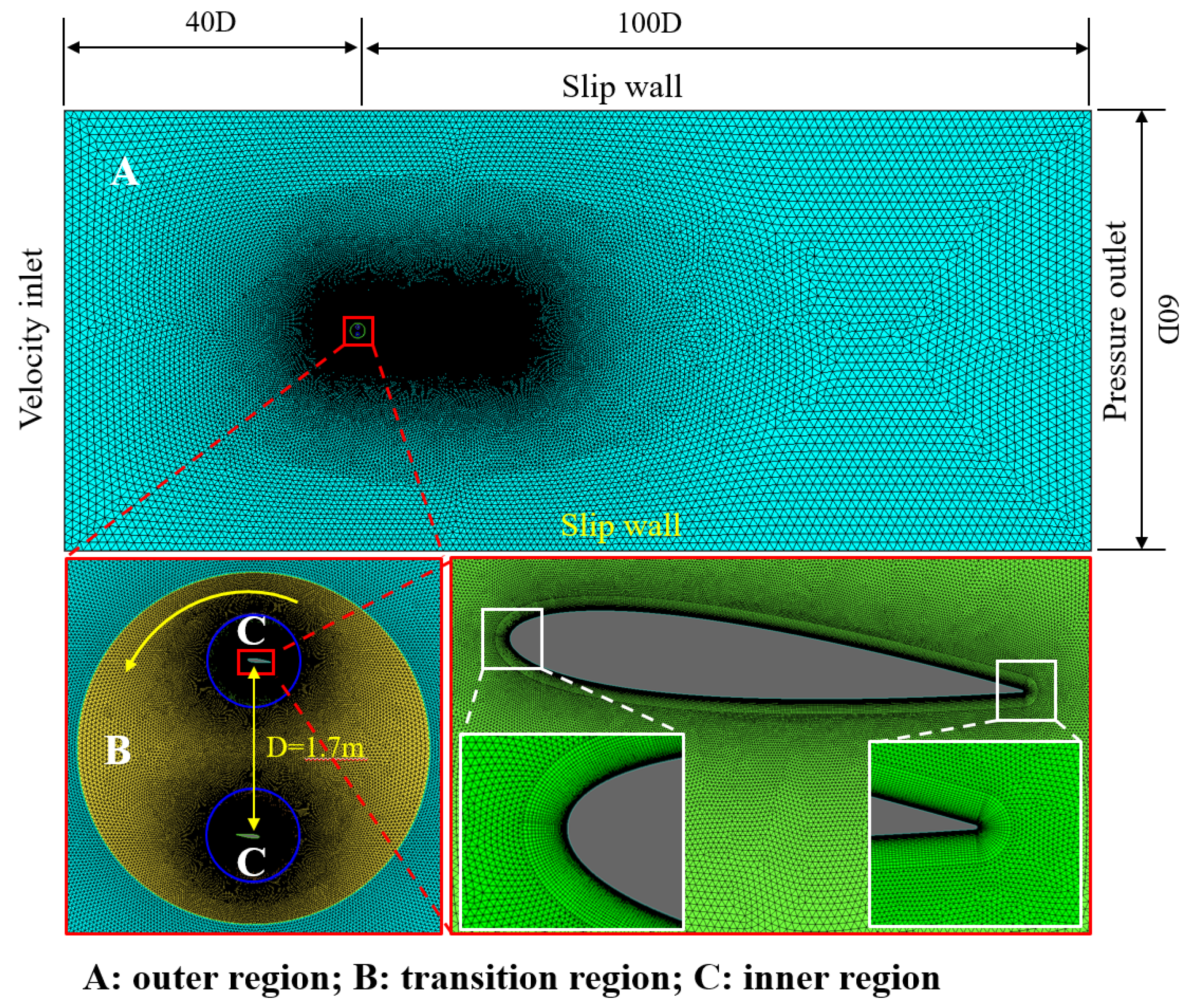
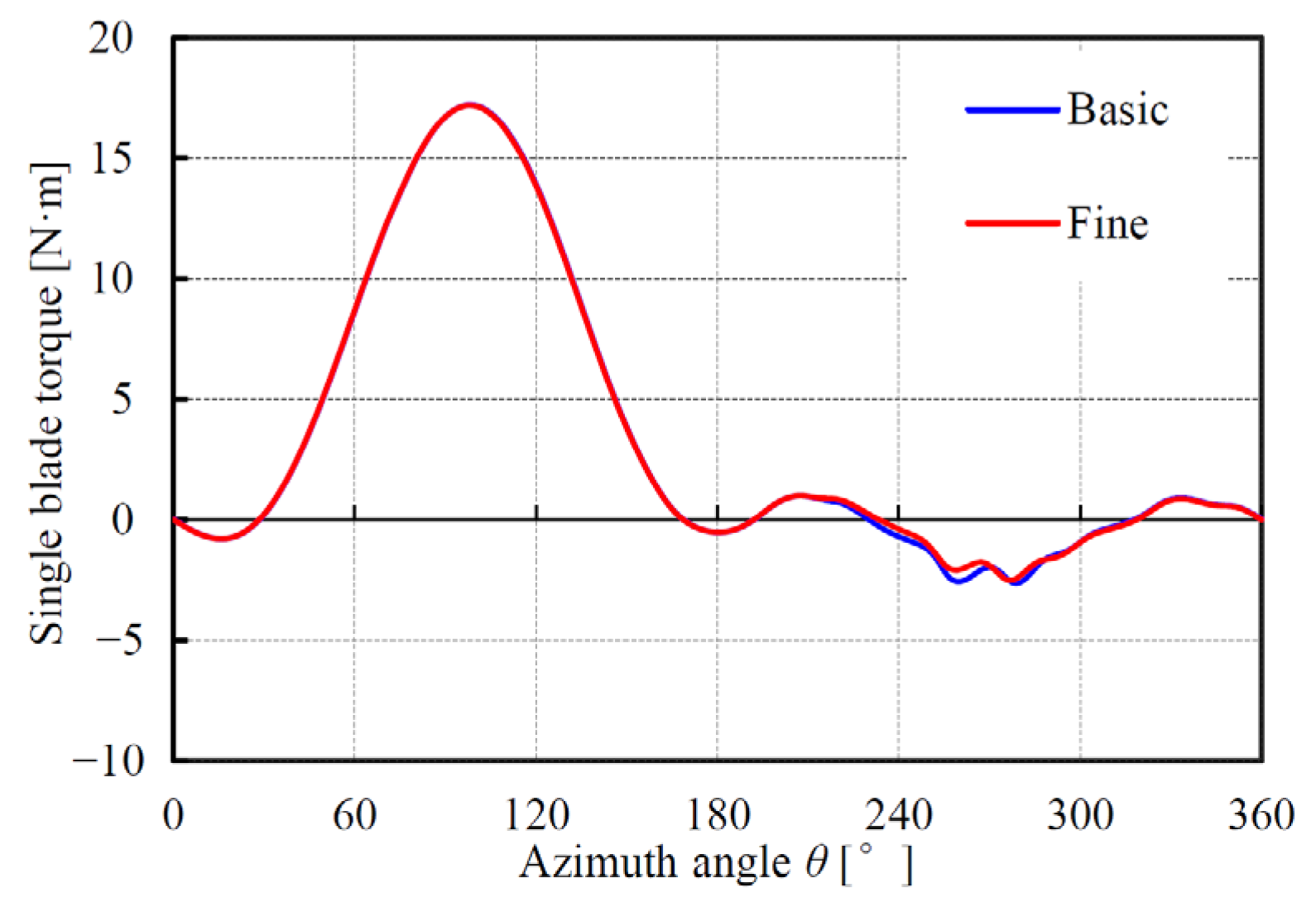
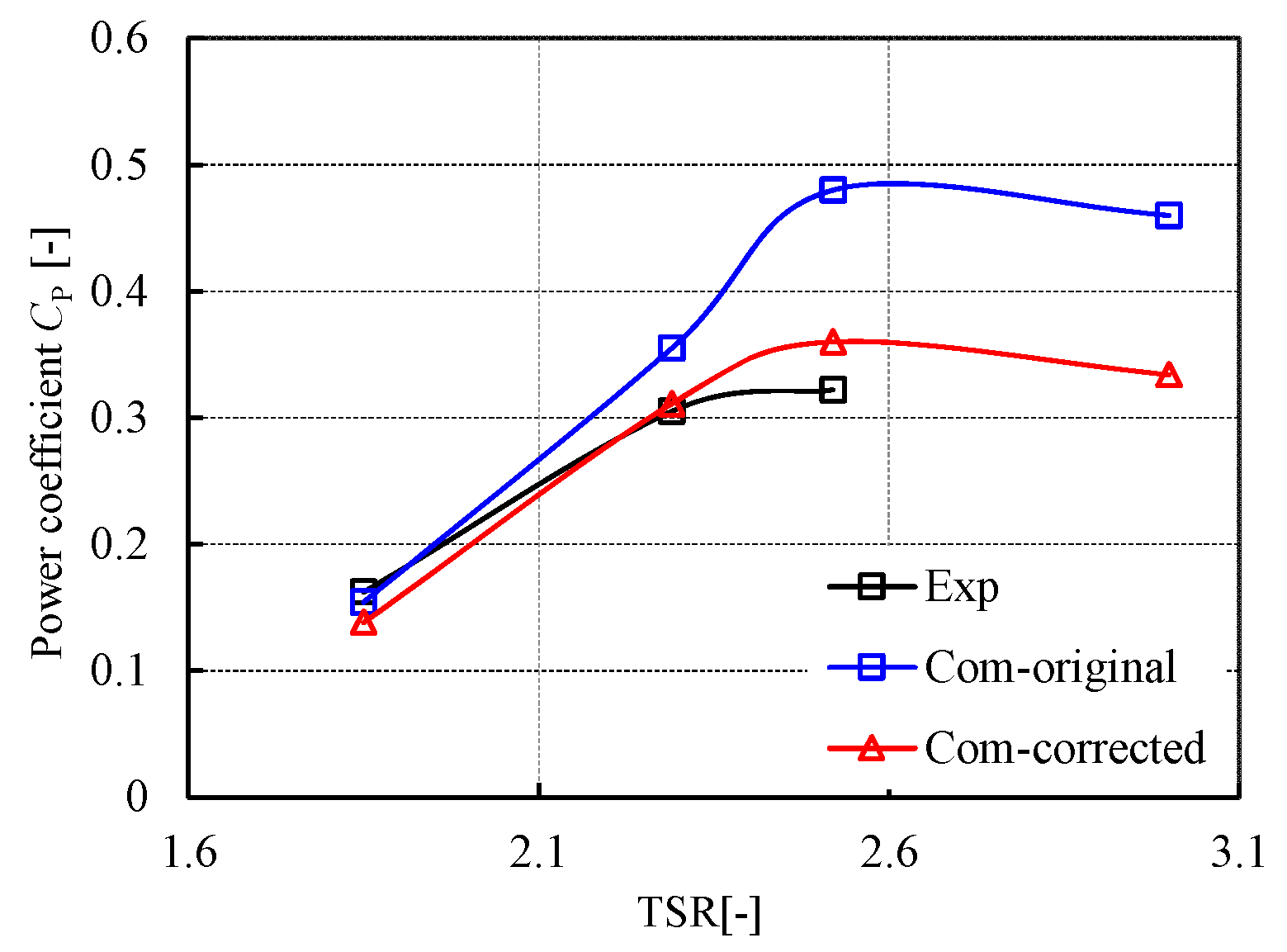
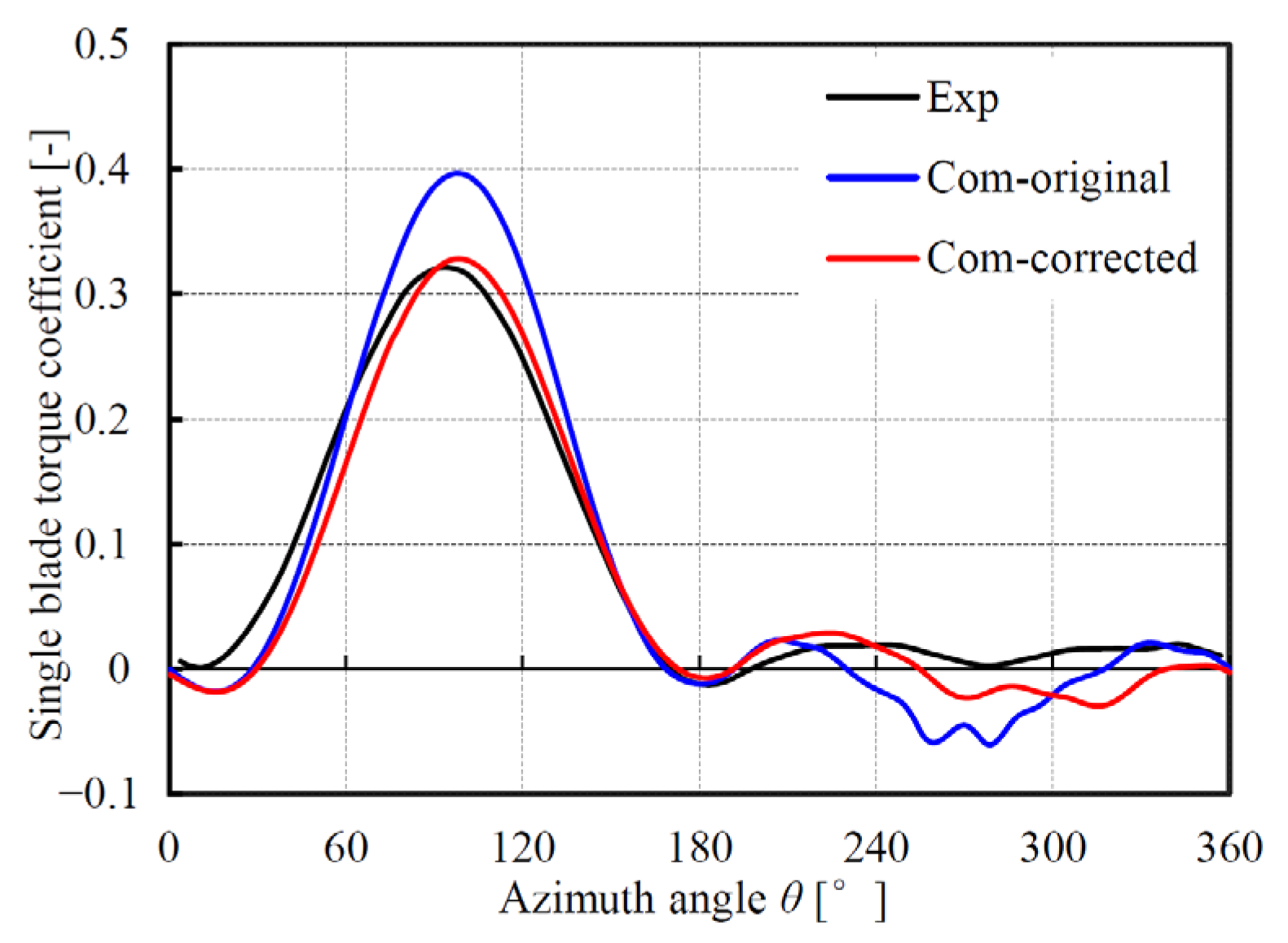
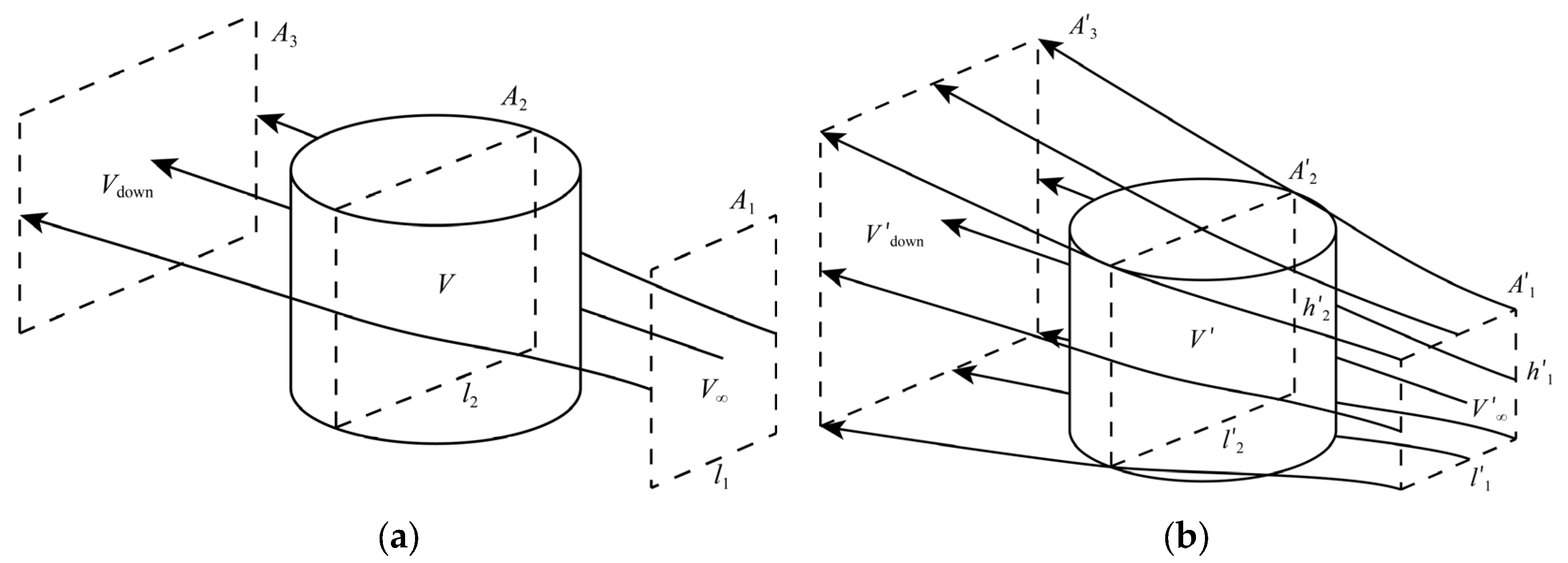

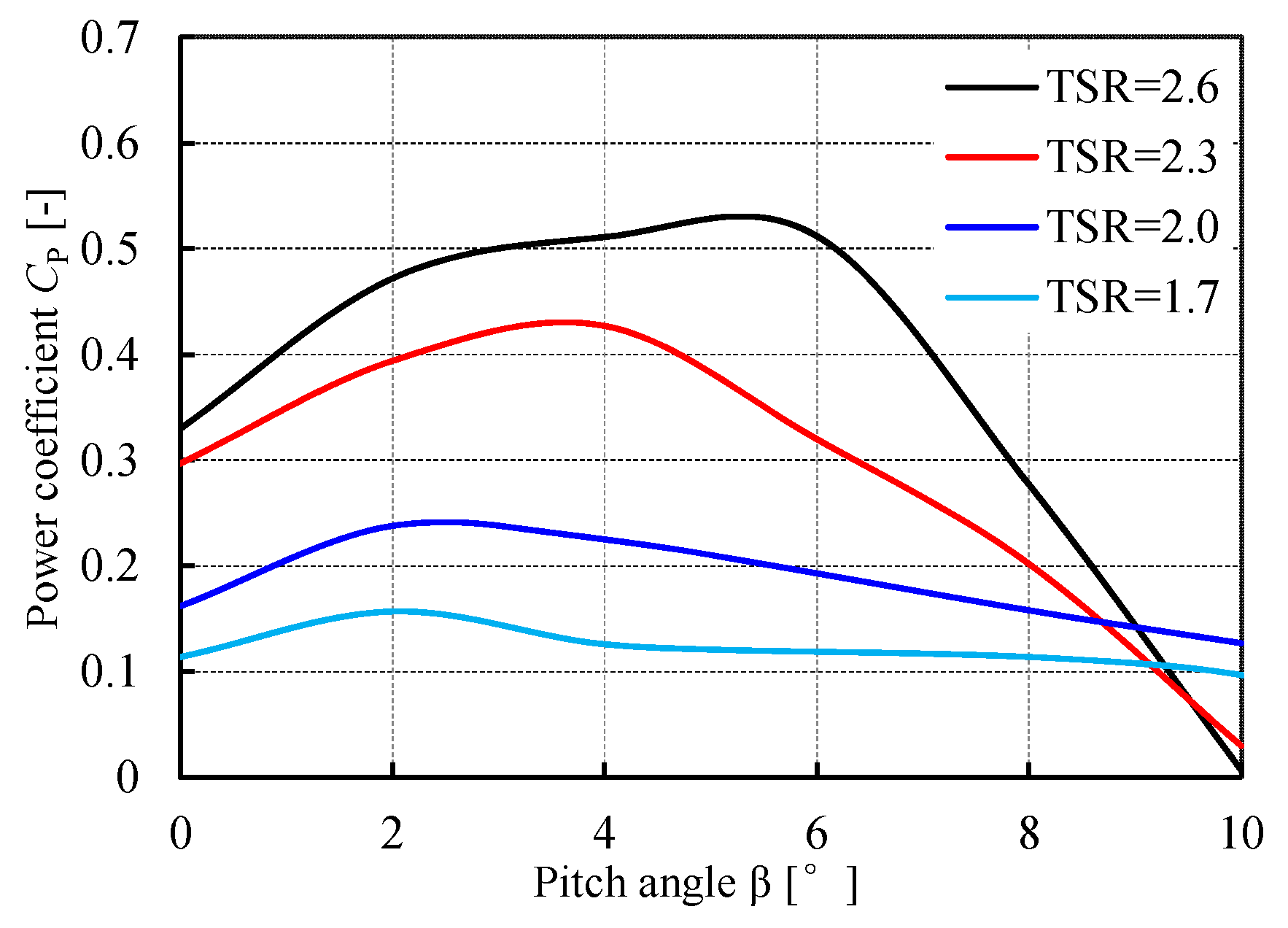
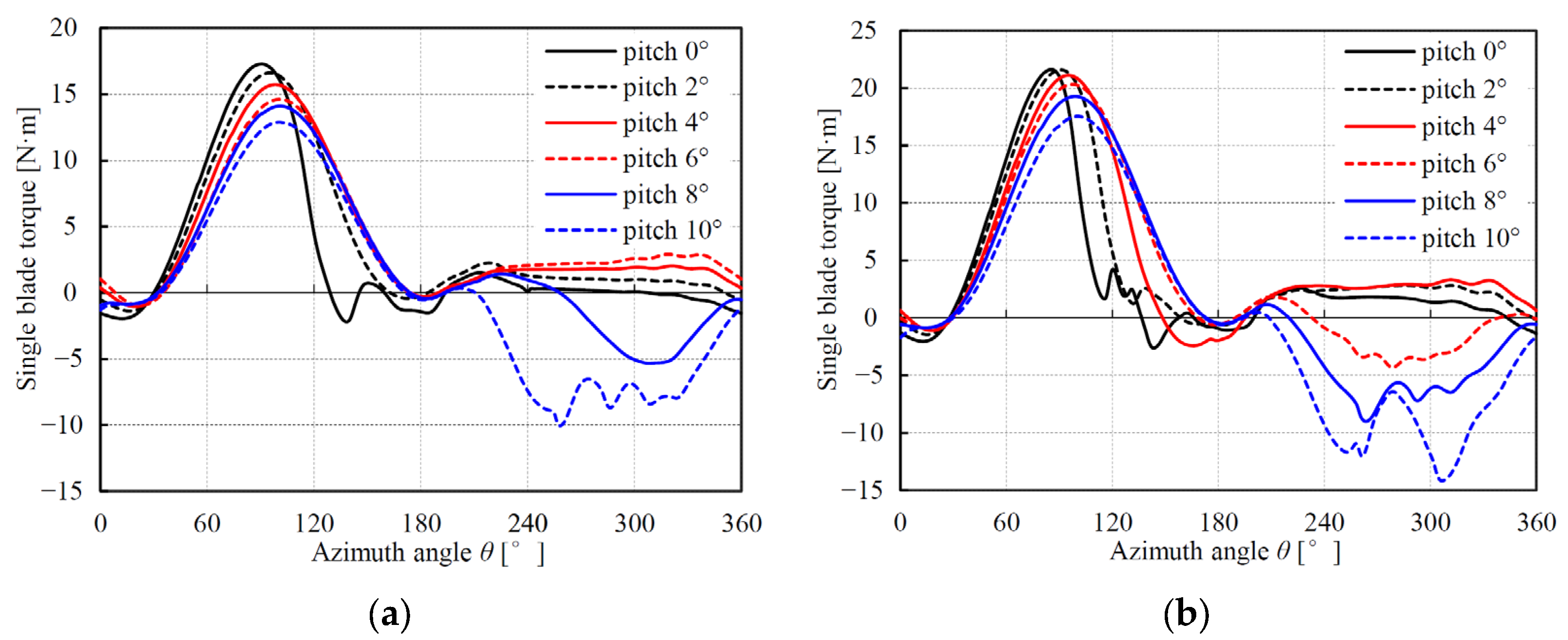

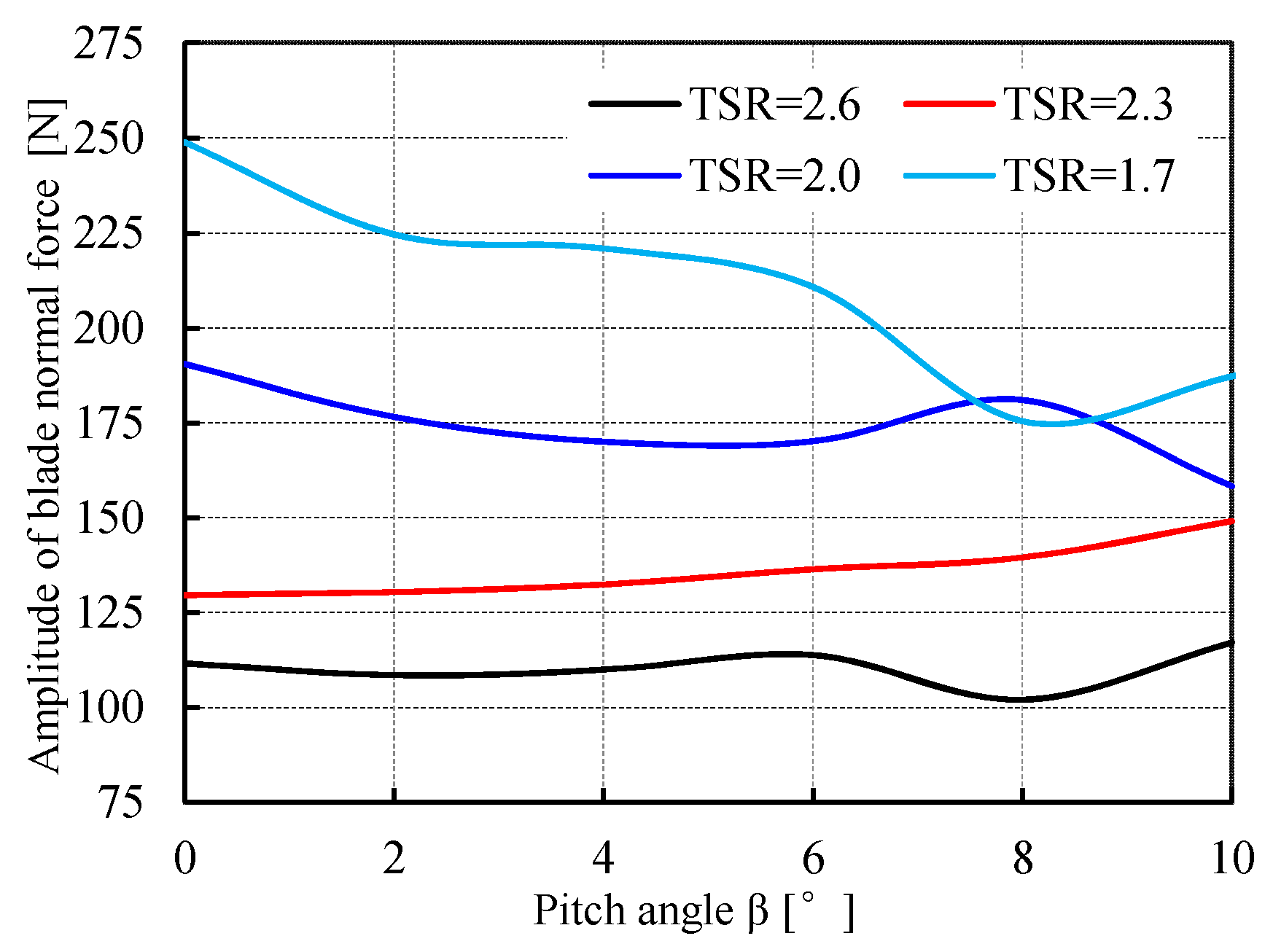

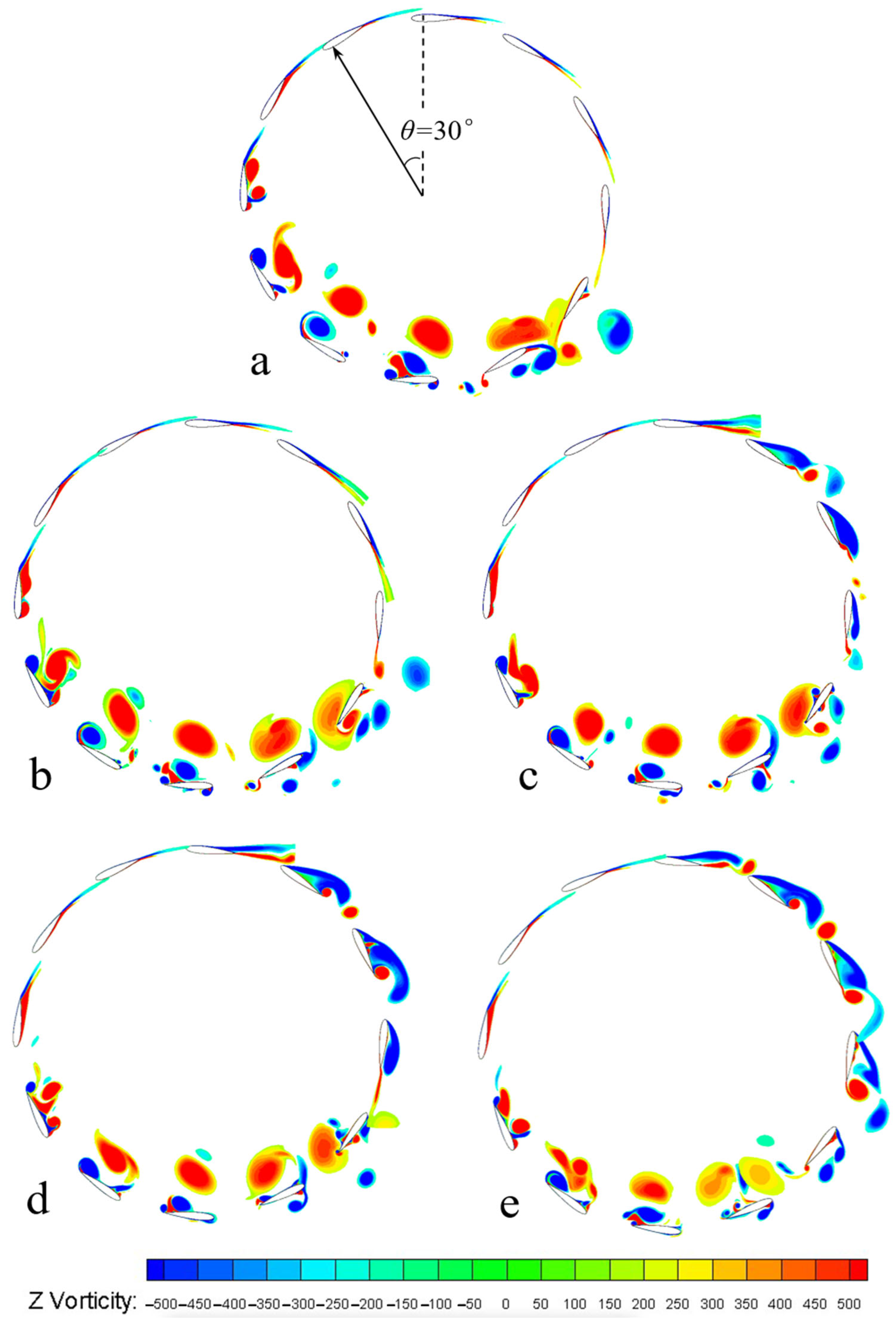
| Items | Specifications |
|---|---|
| Diameter of the rotor D | 1.7 m |
| Diameter of the shaft | 0.2 m |
| Span-wise length H | 1.02 m |
| Blade number N | 2 |
| Airfoil | NACA0015 |
| Blade chord length c | 0.225 m |
| Solidity (Nc/D) | 0.265 |
| Solver | Pressure-Based with Coupled Algorithm |
|---|---|
| Numerical schemes | 2nd order upwind for all the transport equations and the bounded 2nd order implicit for the time differencing |
| Turbulence model | Shear Stress Transport (SST) |
| Convergence criterion | Torque coefficient variation lower than 0.1% between two subsequent revolutions |
| Calculation domain | Circular inner zone rotating with the turbine Rectangular fixed outer zone |
| Domain dimensions | Inlet section: 40 rotor’s diameters upwind Outlet section: 100 rotor’s diameters downwind Lateral boundary: 30 rotor’s diameters Sliding interface: 2 rotor’s diameters |
| Mesh type | Unstructured (triangular elements) with extrusion of layers of quadrilateral elements in the near-wall zone |
Disclaimer/Publisher’s Note: The statements, opinions and data contained in all publications are solely those of the individual author(s) and contributor(s) and not of MDPI and/or the editor(s). MDPI and/or the editor(s) disclaim responsibility for any injury to people or property resulting from any ideas, methods, instructions or products referred to in the content. |
© 2023 by the authors. Licensee MDPI, Basel, Switzerland. This article is an open access article distributed under the terms and conditions of the Creative Commons Attribution (CC BY) license (https://creativecommons.org/licenses/by/4.0/).
Share and Cite
Hao, W.; Abdi, A.; Wang, G.; Wu, F. Study on the Pitch Angle Effect on the Power Coefficient and Blade Fatigue Load of a Vertical Axis Wind Turbine. Energies 2023, 16, 7279. https://doi.org/10.3390/en16217279
Hao W, Abdi A, Wang G, Wu F. Study on the Pitch Angle Effect on the Power Coefficient and Blade Fatigue Load of a Vertical Axis Wind Turbine. Energies. 2023; 16(21):7279. https://doi.org/10.3390/en16217279
Chicago/Turabian StyleHao, Wenxing, Abdulshakur Abdi, Guobiao Wang, and Fuzhong Wu. 2023. "Study on the Pitch Angle Effect on the Power Coefficient and Blade Fatigue Load of a Vertical Axis Wind Turbine" Energies 16, no. 21: 7279. https://doi.org/10.3390/en16217279






